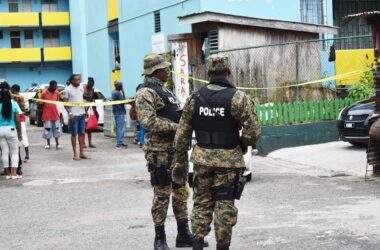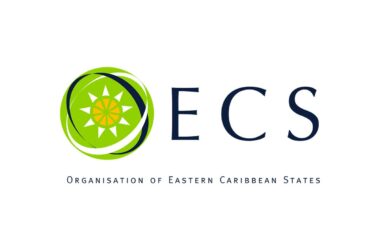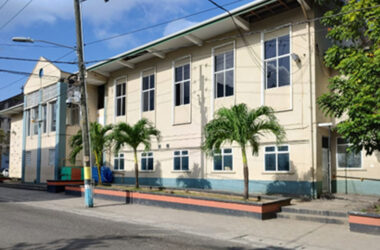NOT in our wildest dreams would we have envisioned that 41 years after Independence and 53 years after its official adoption, we would still be having discussions about the correct colours of the national flag – our most recognized national symbol.
One would have thought that such a discussion would have been over many years ago and that everyone would for a certainty know the true colours of the flag.
Afterall, aren’t the national symbols and their meanings taught to students at an early age? We have been informed that the symbols and what each stands for are taught at schools to students at an early age, however for a very long time the colours blue and gold have been incorrectly taught.
Many of our students have been taught that the golden triangle on the flag is yellow in colour and that the blue is simply just blue. Well it is not just blue, it is Cerulean Blue.
And like past independence celebrations, the discussions as to the true colours of the flag continued this year as well.
Repeatedly has the designer of the flag, deceased Sir Dunstan St. Omer and his family, explained the reason why the colours were chosen and by so doing say exactly what the true colours are.
We would like to help in the understanding of the true colours of the flag but highlighting St. Omer’s description of the flag, with the hope that by doing so the discussions and uncertainty about the flag’s true colours would end.
The national flag was officially adopted on March 1, 1967 and described this way:
On a plain blue field, a device consisting of a white and black triangular shape, at the base of which a golden triangle occupies a central position.
The triangles are superimposed on one another the black on the white, and the gold on the black. The black ends as a three-pointed star in the centre of the flag.
The width of the white part of the triangle is one-and-a-half inches on both sides of the black. The distance between the peaks of the black and white triangles is four inches.
The triangles share a common base the length of which is one-third of the full length of the flag.
The dimensions of the National Flag shall be in the following proportions: 6’x3’ and 9”x4.5”
Cerulean Blue represents fidelity. This blue reflects our tropical sky and also our emerald surrounding waters: the Caribbean Sea and the Atlantic Ocean.
Gold represents the prevailing sunshine in the Caribbean and prosperity.
Black and white stand for the cultural influences – the white part, the white culture; the black part, the black culture -the two races living and working in unity.
The design impresses the dominance of the Negro culture vis-à-vis that of Europe, against a background of sun¬shine and ever-blue sea. This is represented by the three triangles in the centre of the flag, symbolising three pitons.
The Triangle, the shape of which is an isosceles triangle, is reminiscent of the island’s famous twin Pitons at Soufriere, rising sheer out of the sea, towards the sky -themselves, a symbol of the hope and aspirations of the people.
We hope this clears up any doubt one may have as to the true colours of the national flag and that when on display the true colours are shown.













